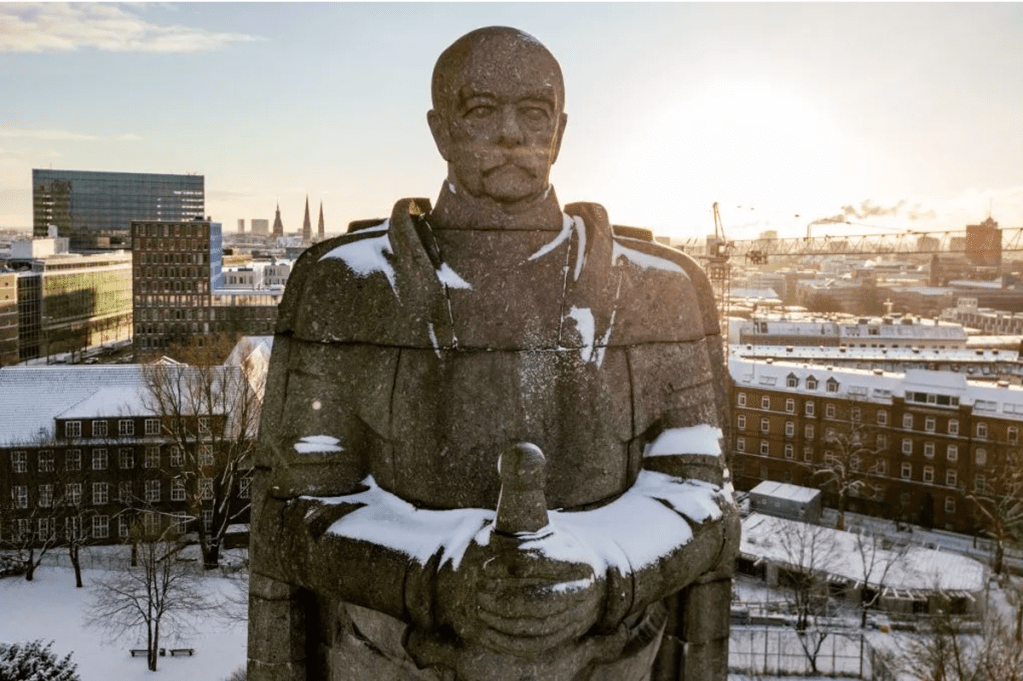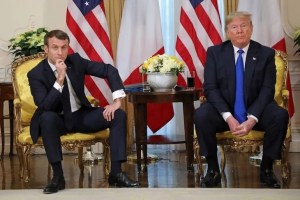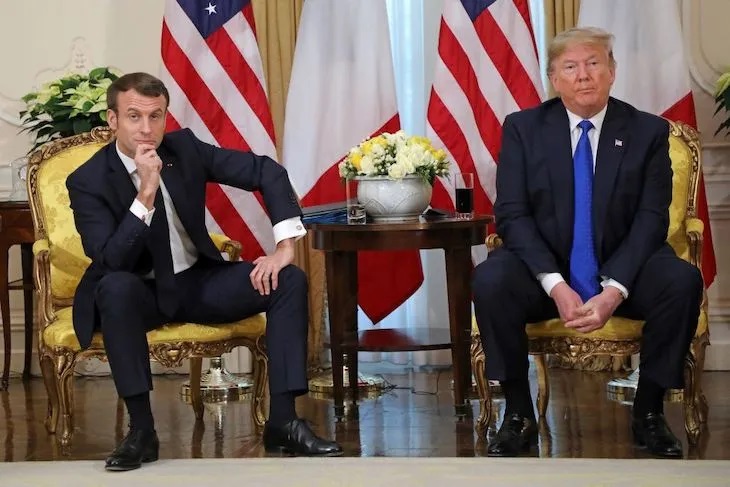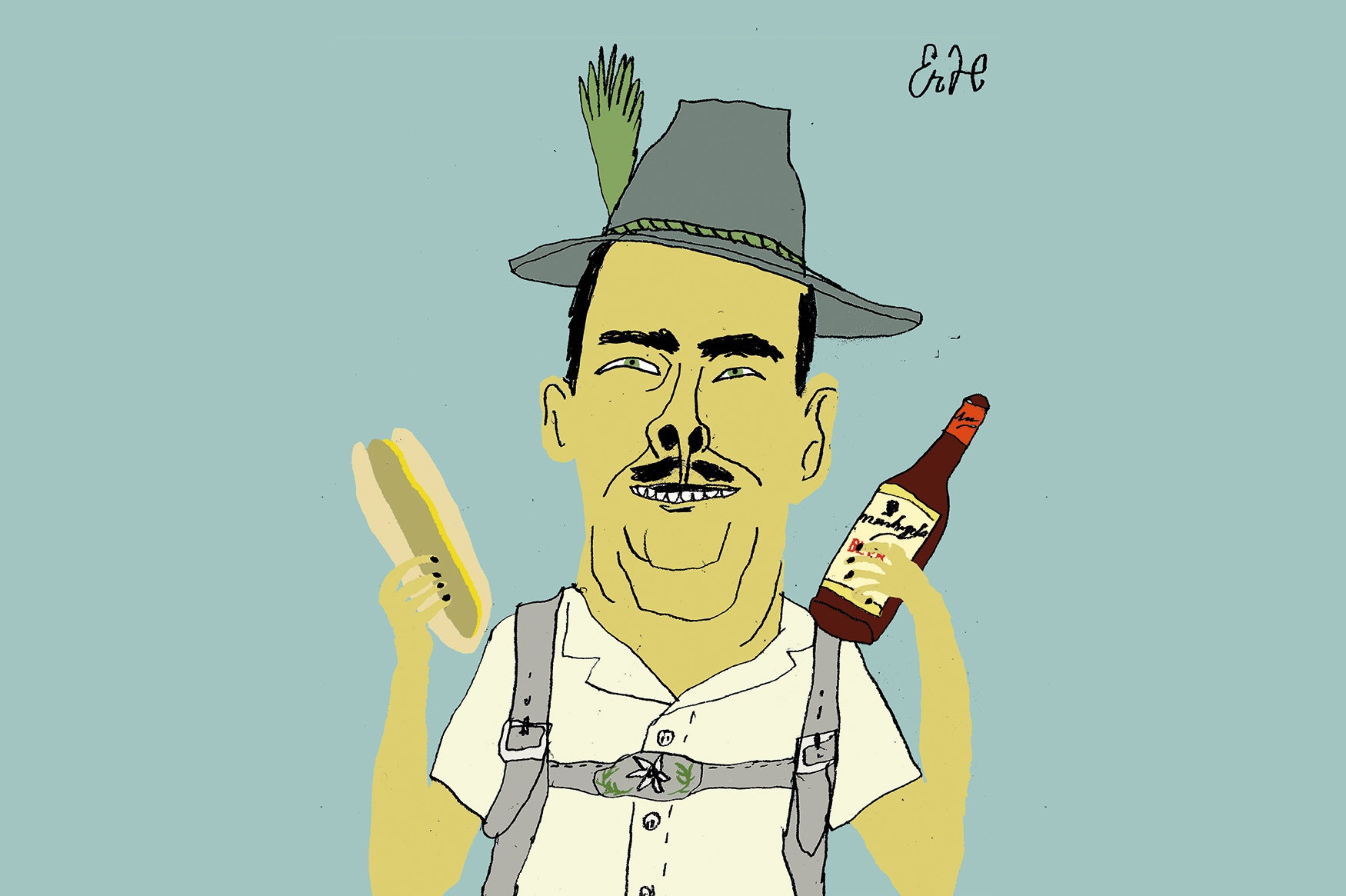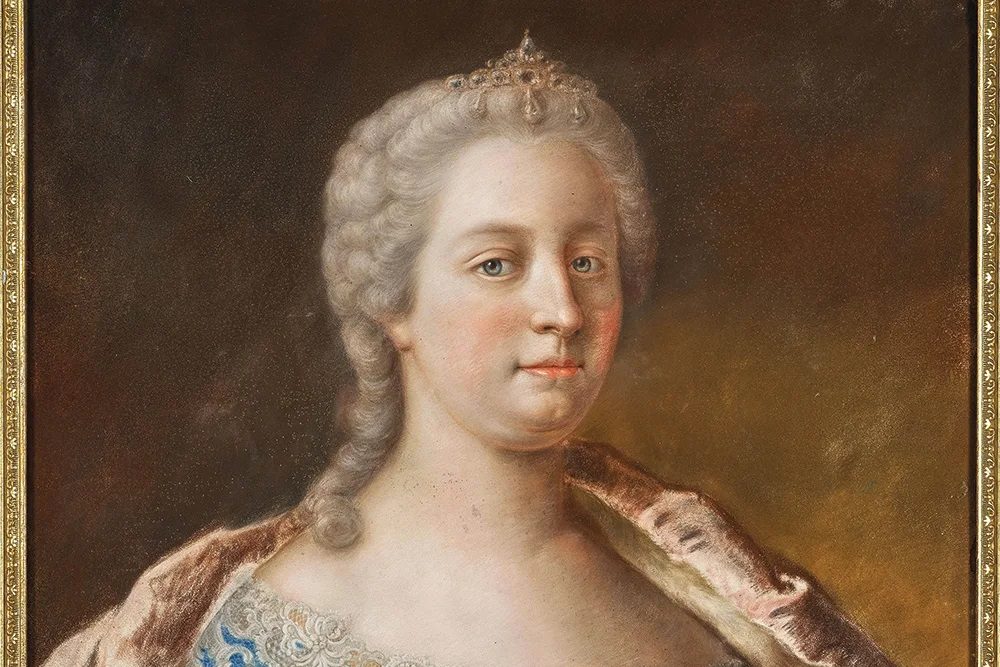What’s in a name? On the face of it, the Bismarck-Zimmer in Berlin’s Foreign Ministry building looks like just another boring conference room: functional office furniture, bland bureaucratic décor — an ideal forum for those tedious, conscientious meetings at which German politicians and diplomats excel.
However, that nondescript committee room has now become headline news in Germany, after the Bundesrepublik’s Foreign Ministry announced it would henceforth be renamed the Saal der Deutschen Einheit, or the Hall of German Unity (the “Tag der Deutschen Einheit,” the Day of German Unity, on October 3, is the day when Germans celebrate the Reunification of 1990).
Is this a sign that Germany is turning against Otto von Bismarck, the architect of Germany’s original unification in 1871? After all, this hasn’t happened in isolation. Germany’s biggest Bismarck statue, in Hamburg, became a focus for street protests, prompting Hamburg’s Ministry of Culture and Media to begin a process of “contextualization” (whatever that means) of his memorial.
Bismarck’s fluctuating reputation has always revealed a good deal about German attitudes to its stormy past — and its challenging future. As the great British historian A.J.P. Taylor observed, “Bismarck is the German barometer — the test of what Germans think of themselves, and of the world.”
To many Germans, mainly on the right, Bismarck remains a hero — the founder of the nation, who presided over a long period of peace, prosperity and social emancipation. However, for some Germans, mainly on the left, he’s always been a villain — a reactionary warmonger who set Germany on an imperialistic path that led to World War One and the Third Reich.
Which of these is the prevailing view tells you a lot about which way the wind is blowing in Germany, whether the forces of conservatism or radicalism are in the ascendant. As the supreme Machiavellian politician, a brilliant schemer who delighted in playing off rival factions against each other, it’s a kulturkampf the Iron Chancellor would have relished.
Superficially, the Foreign Ministry’s explanation for this name-change was a model of diplomacy: “The new name takes into account the historical development of the area in which the Politburo of the SED met during GDR times.” Yet this ostensibly uncontentious statement reveals the unique complications of German history. The Sozialistiches Einheitspartei Deutschlands, or SED, was the communist dictatorship that ruled the East German “Democratic” Republic, in which anyone who tried to escape over the border into West Germany would be shot on sight. For younger Germans, “Einheit” may be associated with Reunification. For older Germans, it still carries associations with East Germany’s one party state.
Moreover, the building in which this room is housed wasn’t only inhabited by the SED. The original building was constructed in 1934 as the headquarters of the Reichsbank by an architect handpicked by Hitler, and though the Nazi era structure has been obscured by a modern extension, the original is still extant. No one is suggesting such a building shouldn’t be utilized simply because of its heritage, but in the light of this controversy it’s a rich irony all the same. Of all the people associated with this building, Bismarck is arguably the least contentious. In a city like Berlin, with so many haunted buildings, you might have thought it would be wiser to simply let sleeping dogs lie.
Discussing Bismarck’s demotion from the German Foreign Office (an office he founded and led with such distinction), press reports have focused on the fact that the current German foreign minister is Annalena Baerbock, the Green Party leader who won nearly 15 percent of the vote in last year’s election, securing the Greens a central role in Germany’s coalition government. It’s probably fair to say most Green activists aren’t natural Bismarck fans, but it was under a previous Green foreign minister, Joschka Fischer, that this room was named after Bismarck in the first place. As always, in German politics, nothing is quite as simple as it first appears. “Feministische” is a prominent buzzword in reports about this piece of gesture politics. In fact, I suspect it may have more to do with colonial angst.
Germany has come rather late to the current post-colonial debate, partly because its colonial history wasn’t quite so extensive as some other European countries, but mainly because for a long time it was (quite rightly) preoccupied with the genocidal legacy of the Third Reich. Now, in ethnological institutions like the Humboldt Forum, Germany’s colonial role is coming under increasing scrutiny. As the host of the Congo Conference in Berlin in 1884, Bismarck is a natural bogeyman for German anti-colonialists. His imperialistic get-together started the so-called Scramble for Africa, which carved up the African continent, sharing its spoils between the European powers.
Actually, pinning the blame for this on Bismarck seems a bit unfair. He never wanted Germany to acquire any African colonies — not so much for moral but for purely practical reasons. He calculated (probably quite rightly) that they’d be a drain on German resources, rather than enriching the Reich.
Indeed, when you examine Bismarck’s record, it’s hard to find any reason to condemn him, even by the anachronistic progressive standards of today. Yes, he started three small wars, but he ended them pretty quickly, and he subsequently kept the peace in Europe for a generation. He introduced illness and accident insurance for German workers. He instigated old age pensions. His policy of “Practical Christianity” laid the foundations for the world’s first welfare state.
A.J.P. Taylor put it best: “Though Bismarck lacked humbug, he did not lack principles. Only they were not liberal principles. They were principles founded in distrust of human nature, principles of doubt and restraint.” This is what made him so successful, a conservative statesman guided by pragmatism rather than ideological cant. In 1890, when Kaiser Wilhelm II and Bismarck parted ways, Punch published an iconic cartoon called “Dropping the Pilot” which encapsulated Germany’s folly in dispensing with the Iron Chancellor. After all these years, the lesson remains the same. To paraphrase Taylor, the world owes much of what is good in modern Germany to Bismarck’s policies, and whether it’s “contextualizing” a statue or renaming a function room, I believe the Bundesrepublik would forget that at its peril.
This article was originally published on The Spectator’s UK website.



